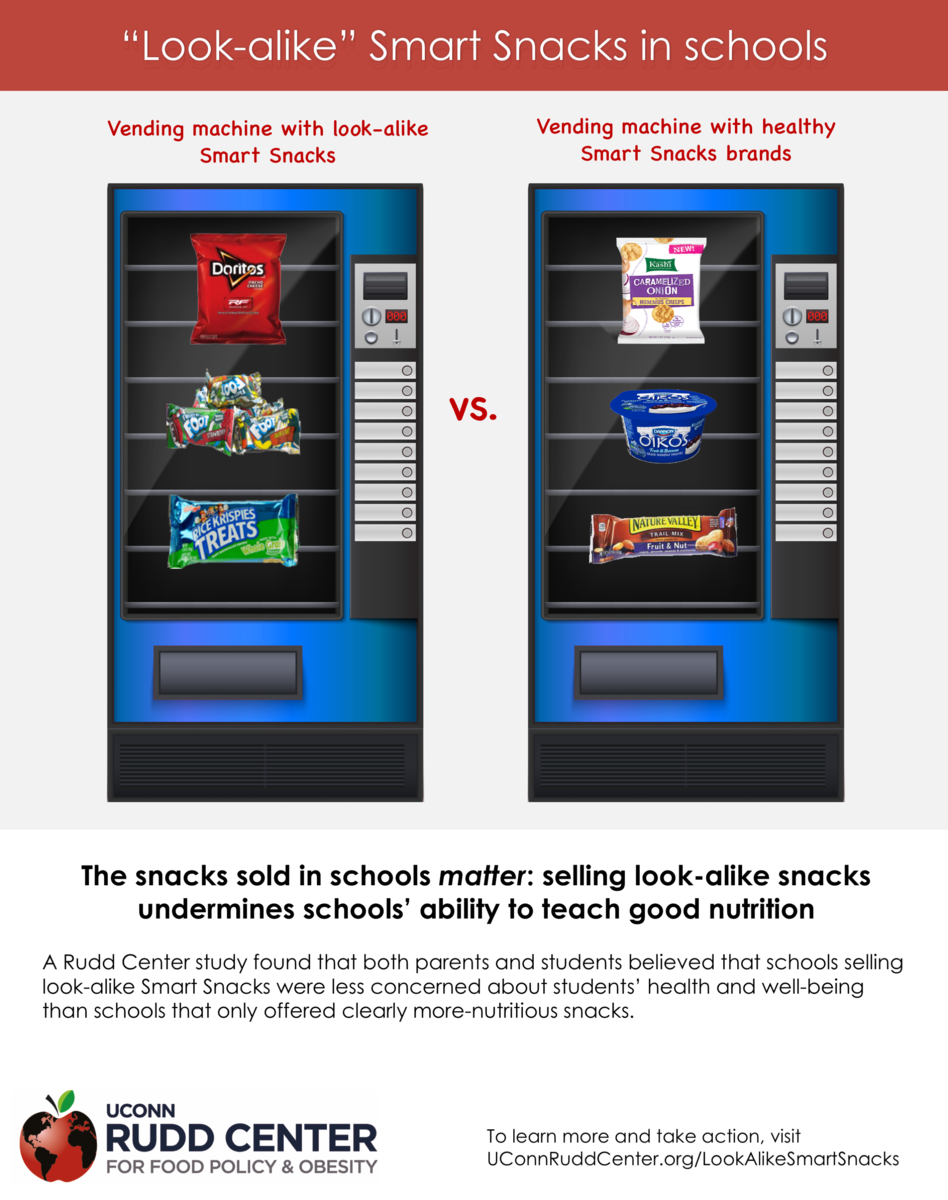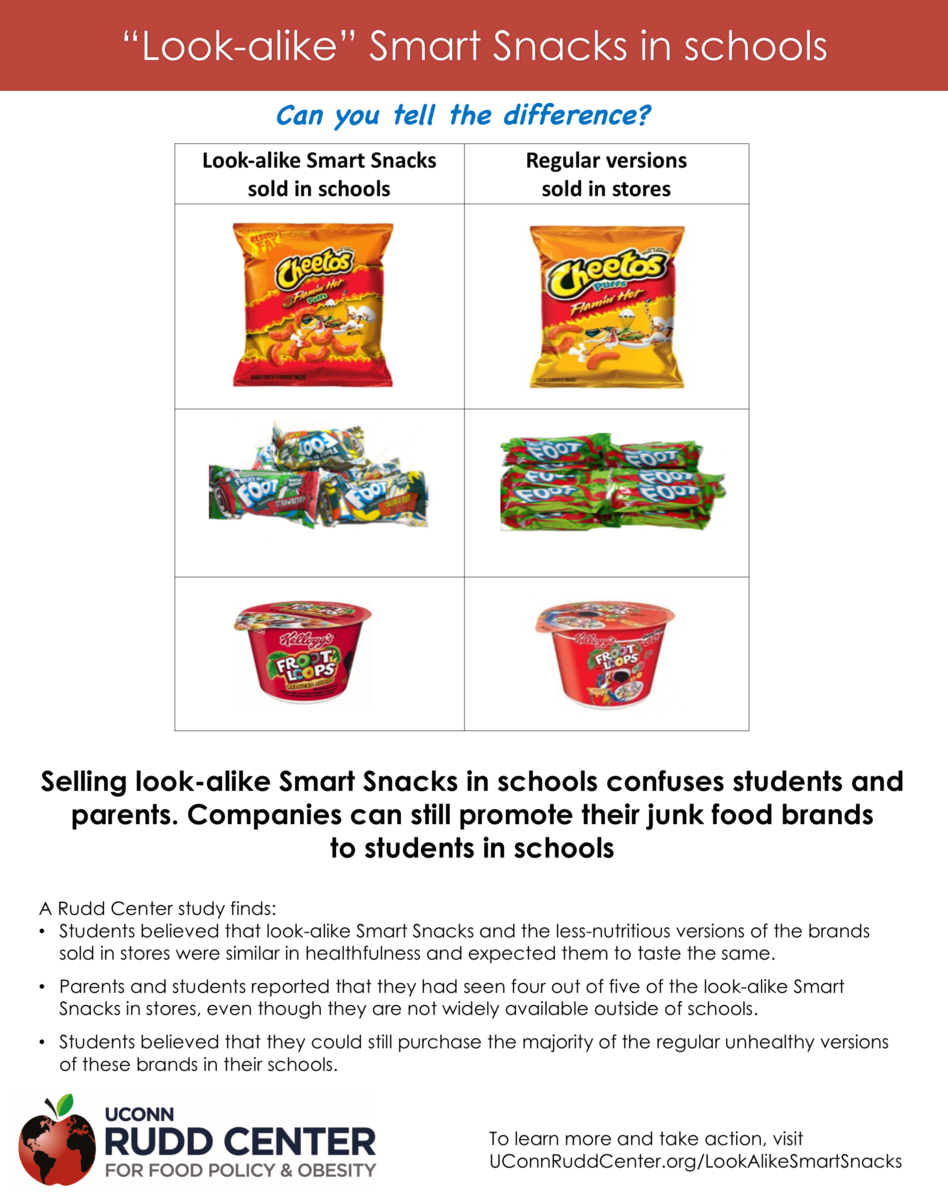Food Marketing in Schools
In 2016, the U.S. Department of Agriculture implemented new rules that prohibit the marketing of products that do not meet nutrition standards to children and teens in schools during the school day. However, food companies continue to market sugary drinks and junk food brands to children through their schools, including through branded fundraisers, “educational” materials, incentives for teachers, and sponsorships. Additionally, despite these regulations, using branded “look-alike” snacks allows companies to sell junk food in schools during the school day.
When we send our children to school, we expect them to learn about math, reading, and science. But food companies are also trying to teach them about their brands. Marketing soda, candy, fast food, and other unhealthy products in schools undermines efforts to teach children about good health and nutrition.
Resources
Rudd Center Research
- Asada, Y., Chriqui, J., Schwartz, M., Mancini, S. & Harris, J.L. (2020). Food and beverage marketing in schools: Understanding school superintendents’ perspectives and practices after the Healthy, Hunger-Free Kids Act. Public Health Nutrition, in press.
- Harris, J.L., Hyary, M., & Schwartz, M.B. (2016). Effects of offering “look-alike” products as Smart Snacks in schools. Childhood Obesity, 12(6), 432-439.
- Harris, J.L., & Fox, T. (2014). Food and beverage marketing in schools: Putting student health at the head of the class. JAMA Pediatrics, 168(3), 206-208.
Presentations
Food Marketing in Schools downloadable presentation:
Youth Exposure to Food & Beverage Brands in Schools downloadable presentation:
Fact Sheets
Food Marketing in Schools fact sheet:
WellSAT 3.0
The WellSAT is a quantitative assessment tool to score and help improve local School Wellness Policies, including policies on food marketing in schools. Since 2010, this measure has been used by thousands of people across the country, representing school districts from every state.

